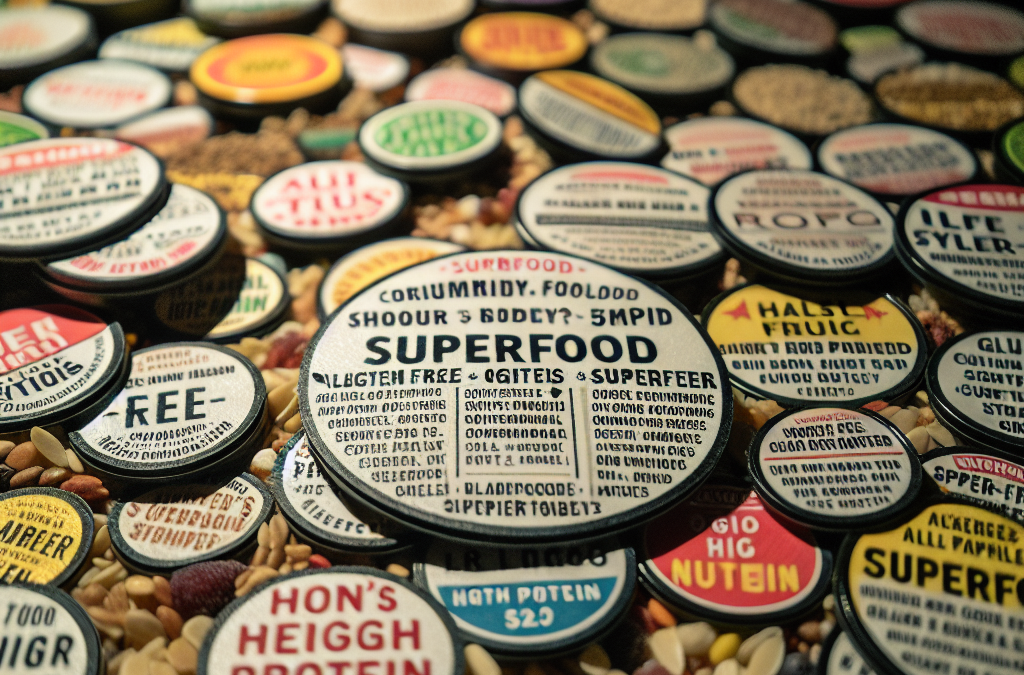- 1. Understanding the Principles of a Live Food Diet
- 2. Choosing the Right Foods for Your Live Food Journey
- 3. Preparing and Storing Live Foods Safely
- 4. Ensuring Nutritional Balance in a Live Food Diet
- 5. Adapting Your Lifestyle for Consistency
- 6. Staying Updated With Trends in 2025
- 7. Staying Motivated and Overcoming Challenges
1. Understanding the Principles of a Live Food Diet
What Is a Live Food Diet?
The live food diet is centered around consuming raw and minimally processed foods that retain their natural enzymes, nutrients, and vitality. This approach emphasizes eating foods in their freshest stateâthink fresh fruits, vegetables, sprouted grains, nuts, and seeds. The concept is rooted in the belief that live foods support better digestion, increased energy, and overall well-being, especially as we move into 2025 when health-conscious choices are more vital than ever.
By choosing a live food diet, you’re prioritizing foods that are often filled with natural enzymes lost during cooking. These enzymes assist in breaking down food more efficiently, facilitating better nutrient absorption. This diet is not just about eating raw; itâs about reconnecting with nature and understanding the importance of eating foods in their unprocessed state to promote health.
Research from 2024 shows that a significant percentage of health enthusiasts are shifting towards live food diets for detoxification and energy renewal. If youâre curious about optimizing your health in 2025, understanding the core principles of this diet helps you make smarter food choices that align with your wellness goals.
2. Choosing the Right Foods for Your Live Food Journey
Focus on Fresh and Organic Produce
When embarking on a live food diet, selecting fresh, organic produce is essential. Organic fruits and vegetables are free from pesticides and chemicals that can diminish their enzyme content. In 2025, more grocery stores and farmersâ markets offer organic options, making it easier to access high-quality ingredients.
Start with local and seasonal produce to maximize freshness. Not only will these foods taste better, but they also retain higher nutrient levels. Incorporating a variety of colorful fruits and vegetables ensures your body receives a broad spectrum of antioxidants, vitamins, and minerals necessary for optimal health.
Bonus tip: Absolutely prioritize organic seed sprouts and grassesâthey are packed with enzymes, vitamins, and nutrients vital for a successful live food diet. Incorporate these into salads, smoothies, or snack bowls for a nutritional boost.
Include Sprouted Grains and Nuts
Sprouted grains and nuts are game-changers in the live food diet. They enhance digestibility and increase the bioavailability of nutrients like B-vitamins, amino acids, and minerals. In 2025, sprouting has gained popularity due to its nutritional benefits and ease of preparation.
To sprout grains or nuts, soak them in water for 12-24 hours, then rinse and let them sprout in a warm, dark place. You can then incorporate these sprouted foods into salads or raw energy bars, making your meals more satisfying and nourishing.
Practical tip: Experiment with sprouted lentils or sunflower seeds in your salads for added crunch and vital nutrients. Consuming sprouted foods regularly helps optimize your live food diet in 2025, supporting energy and detoxification.
3. Preparing and Storing Live Foods Safely
Proper Preparation Techniques
Preparation is key when maintaining the integrity of live foods. Always wash fruits and vegetables thoroughly to remove dirt and potential contaminants. Use gentle tools like a vegetable brush, and avoid peeling when possibleâpeels often contain valuable nutrients and fiber.
When preparing raw dishes, utilize sharp knives for clean cuts that prevent oxidation. Minimize exposure to heat or air during preparation to safeguard enzymes. Consider using food dehydrators for certain raw recipes or sprouted foods, taking care to keep temperatures below 115°F (46°C).
Education on proper preparation ensures you maximize nutrient retention, aligning with your goal of living a vibrant, health-boosting live food diet in 2025.
Storage Best Practices
Storing live foods correctly is crucial to maintaining their freshness and enzyme content. Use airtight glass containers in the refrigerator for cut fruits and vegetables, and keep sprouted foods in breathable containers to prevent mold growth.
For longer storage, dehydration or freezing (at appropriate temperatures) can preserve raw foods without compromising their qualities. Labels and dates help plan your meals efficiently, reducing waste and ensuring you always have fresh options available.
Smart storage practices contribute to a sustainable, enjoyable live food diet experience in 2025, reducing waste and promoting better health outcomes.
4. Ensuring Nutritional Balance in a Live Food Diet
Incorporating Protein Sources
One common concern is whether a live food diet provides enough protein. Fortunately, many plant-based options are rich in protein, such as sprouted lentils, sunflower seeds, chia seeds, and hemp. These foods are not only high in protein but also contain healthy fats and fiber.
For optimal health in 2025, aim to include a variety of these protein-rich foods daily. Combining different plant sources ensures you get all essential amino acids, which are vital for muscle repair, immunity, and overall vitality.
Practical tip: Incorporate a handful of sprouted seeds into your salads or smoothies, or prepare raw energy balls with nuts and dried fruits for protein-dense snacks.
Vitamins, Minerals, and Enzymes
Live foods naturally offer a wealth of vitamins, minerals, and enzymes that bolster your immune system and energy levels. Focus on consuming a rainbow of produceâberries for antioxidants, leafy greens for iron and calcium, and tropical fruits for vitamin C.
In 2025, food innovation continues to improve, with products like fermented raw foods offering additional probiotic benefits. Enzymes are most abundant in raw, fresh foods, making fresh fruit and vegetable juices excellent choices for nutrient density.
Tip: Supplement your diet with green juices or smoothies made from organic, live ingredients to meet your daily nutritional needs effectively.
5. Adapting Your Lifestyle for Consistency
Plan Your Meals Ahead
Consistency is essential when maintaining a live food diet, especially as we approach 2025. Planning your meals in advance helps you avoid impulsive, processed food choices. Create weekly menus featuring fresh smoothies, salads, and raw snacks.
Meal prep on weekends and stock your fridge with pre-washed produce to save time during busy weekdays. This small habit ensures your health goals stay on track regardless of your schedule.
Huge Discount on the Best Certified Organic Nutrient Dense Supplement!
Tip: Use a meal planning app or journal to track your intake and stay motivated on your live food journey.
Overcoming Social and Convenience Barriers
Social gatherings and busy lifestyles can challenge your commitment to a live food diet. Communicate your dietary choices with friends and family to get support. Bring your own raw snacks or dishes to social events to stay aligned with your health goals.
Invest in portable containers and tools like a portable blender or raw travel kit, enabling you to enjoy fresh meals wherever you go. Flexibility and preparation are key to thriving on a live food diet, especially in 2025’s fast-paced world.
Staying adaptable ensures you sustain this vibrant diet long-term, reaping continual health benefits.
6. Staying Updated With Trends in 2025
New Raw Food Products and Innovations
In 2025, the raw and live food scene is booming with innovative products like fermented snacks, raw protein powders, and ready-made vegan raw meals. Staying in the loop will help you incorporate the latest and most nutritious options into your diet.
Follow industry influencers, subscribe to health newsletters, and attend expos or webinars focused on raw living foods to keep your knowledge current.
Using trending tools and products allows you to optimize your live food diet and benefit from cutting-edge health discoveries in 2025.
Community and Support Networks
Joining online forums, local raw food groups, or social media communities will enhance your journey. Sharing recipes, tips, or success stories inspires motivation and accountability.
Increased awareness and community engagement make sticking to a live food diet easier, especially as more people embrace this lifestyle in 2025. Together, you can overcome challenges and celebrate achievements.
Active participation fosters a sense of belonging, making your health journey both effective and enjoyable.
7. Staying Motivated and Overcoming Challenges
Set Realistic Goals
Setting small, achievable goals keeps your motivation high. Whether it’s trying a new raw dish weekly or increasing your daily intake of sprouts, small wins accumulate over time.
In 2025, data shows that goal setting and tracking significantly improve commitment to the live food diet. Use journals or apps to monitor your progress and celebrate milestones.
Remember, consistency outweighs perfection. Even if you slip occasionally, stay committed and view setbacks as learning opportunities.
Seeking Inspiration and Education
Follow success stories of individuals thriving on the live food diet. Read books, watch documentaries, or attend workshops to deepen your understanding.
This continuous education fuels your enthusiasm and helps you discover creative ways to enjoy raw foods, making your journey sustainable and fun in 2025.
Remember: Your mindset and knowledge are powerful tools in maintaining a vibrant, health-boosting live food diet.
Conclusion
The live food diet is more than a trend; it’s a lifestyle that prioritizes health, vitality, and sustainability. As we move into 2025, embracing this diet can lead to improved digestion, increased energy levels, and overall wellness. By understanding the principles, choosing the right foods, preparing and storing them properly, and staying motivated, you can successfully navigate your live food journey.
Remember, the key to thriving on a live food diet lies in consistency, education, and passion. Incorporate these seven effective tips for 2025, and watch your health transform. The power of the live food diet is in your handsâstart today and enjoy a vibrant, healthy life!
Frequently Asked Questions about the Live Food Diet
1. What exactly is a live food diet?
A live food diet consists of raw, minimally processed foods that retain their natural enzymes and nutrients. It emphasizes fresh fruits, vegetables, sprouted grains, nuts, and seeds to support health and vitality.
2. How do I ensure I’m getting enough protein on a live food diet?
Incorporate protein-rich plant foods like sprouted lentils, sunflower seeds, chia seeds, and hemp. Combining various sources ensures you meet your daily protein requirements for muscle health and immune function.
3. Can I still enjoy cooked foods or should I stick strictly to raw?
The live food diet primarily focuses on raw, enzyme-rich foods. However, many choose a flexible approach, gradually increasing raw foods while minimizing cooked ones. Consult a healthcare professional if you have specific health concerns.
4. Are there any risks associated with a live food diet?
When well-planned, a live food diet can be very healthy. However, inadequate nutrition or improper food handling may pose risks. Itâs advisable to educate yourself thoroughly and consult with a nutritionist.
5. How can I stay motivated to follow a live food diet in 2025?
Set realistic goals, explore new recipes, join communities, and keep learning about raw living foods. Celebrating milestones and sharing your journey can keep your motivation high.
Huge Discount on the Best Certified Organic Nutrient Dense Supplement!
Related Content
- The Ultimate Guide to Organic Nutrition Lifestyle in 2025: 7 Effective Tips
- The Ultimate Guide to an Effective Organic Probiotic Nutrition Plan 2025
- Best Local Organic Nut Butters in Haddon Township, New Jersey 08104
- Nutrition – Your First Line of Defense Against Pandemics
- The Future Trends in Superfood Nutrition





